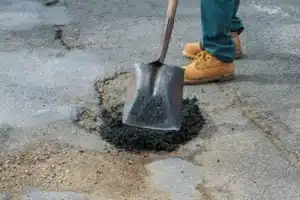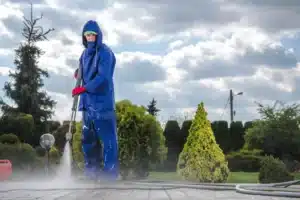Introduction: Understanding Concrete Sealing
Concrete surfaces, while robust, are not immune to the ravages of time and the elements. Sealing these surfaces is crucial in prolonging their service life and maintaining their aesthetic appeal. Whether for polished concrete, stamped patterns, or the humble driveway, a sealer acts as a protective layer to prevent damage such as cracking, staining, and water penetration. This guide will explore everything you need to know about concrete sealing, from the ideal timing to the selection of products and the practical steps you can take to protect your investment. Don’t wait. Learn how to protect your concrete surface from the various elements that can further contribute to its damage.

1. Concrete Basics: Why Sealing Matters
Unsealed concrete is like an open book to stains, water damage, and chemical corrosion. Concrete is porous, and without a protective seal, it absorbs liquids that can lead to deterioration and unsightly blemishes. From colored concrete to aggregate surfaces, sealing is the imperative of protection, guarding against not only moisture but also UV rays and wear from traffic—be it footfall in a home setup or vehicles on a driveway.
2. The Right Time for Concrete Repair and Sealing
The ideal time to seal concrete is shortly after curing, which usually takes about 28 days for new slabs. However, the timing can vary based on climate conditions and the specific product used. It’s vital to repair cracks and other damages before sealing to ensure a uniform finish protecting your concrete surface from the various elements contributing to its deterioration. Regular monitoring is key as it helps identify the need for maintenance resealing, thus preserving the concrete’s functionality and appearance.
3. Sealant Selection for Different Concrete Surfaces
Navigating the myriad of concrete sealers can be daunting. Acrylic resin-based sealers are popular for their cost-effectiveness and ease of application, ideal for decorative work. Penetrating sealers, made from silicone or other materials, dive deep to protect from within—perfect for driveways and areas with freeze-thaw cycles. Matching the right sealer to your needs also means considering the finish, from high-gloss options to natural matte looks, and aligning it with the concrete’s function and location, be it polished concrete flooring or an exposed aggregate sealing job.
4. Application Techniques: How to Seal Concrete for Durability
The key to a successful application is surface preparation—cleaning and, if needed, etching the concrete to ensure adhesion. Once ready, apply the sealer using a roller or sprayer, maintaining a wet edge to avoid lap lines. Two coats might be necessary for driveway sealing or other high-traffic areas to offer enhanced protection.

5. Performance Analysis: Longevity of Different Concrete Sealers
An aptly applied sealer can last anywhere from one to five years, but this varies widely based on foot traffic, vehicle use, and environmental exposure. A sealed driveway, for instance, typically requires more frequent touch-ups than a less-exposed stained concrete patio. Watch for fading, flaking, or a loss of sheen, indicating that it’s time for reapplication.
6. The Aesthetics of Sealed Concrete: Balancing Beauty and Function
Concrete sealers not only safeguard your surfaces but can also elevate their look. Glossy coatings can make colored concrete pop while penetrating sealers leave a natural but protected finish. When done correctly, sealing can enrich the hues of stamped concrete and improve the shine of polished floors, striking a balance between beauty and extended functionality.
7. Expert Insight: Matt The Driveway Guy on Professional Concrete Sealing
Sometimes, the task at hand warrants a professional touch. This is where experts like Matt The Driveway Guy come in. A field specialist can offer quality and longevity assurance, especially when dealing with complex projects like driveway sealing or decorative concrete coatings. Professional-grade equipment and thorough training ensure that every nook and cranny of your concrete is well-covered and preserved.
8. Sustainable Practices: Eco-Friendly Concrete Sealing Options
The demand for greener building materials has led to the development of eco-friendly sealants. These water-based compounds offer the benefits of sealing without harsh chemicals, making them safer for both the user and the environment. They typically emit fewer volatile organic compounds (VOCs) and are increasingly preferred in sustainable construction projects.
Conclusion: Cementing Your Knowledge of Sealing Concrete
Throughout this guide, we’ve unravelled the intricacies of concrete sealing. From choosing the correct sealant type to understanding the proper application techniques, we’ve thoroughly explored how to safeguard your concrete investments. If you’re in the Greenville, SC, area and seeking expert sealing services, remember that Matt The Driveway Guy is at your service. They are not just a business but a neighbor, ready to bring professional quality to your doorstep. Now that you’re armed with knowledge, whether it’s a DIY project or a professional endeavor, you’re ready to tackle your next concrete sealing challenge confidently.






